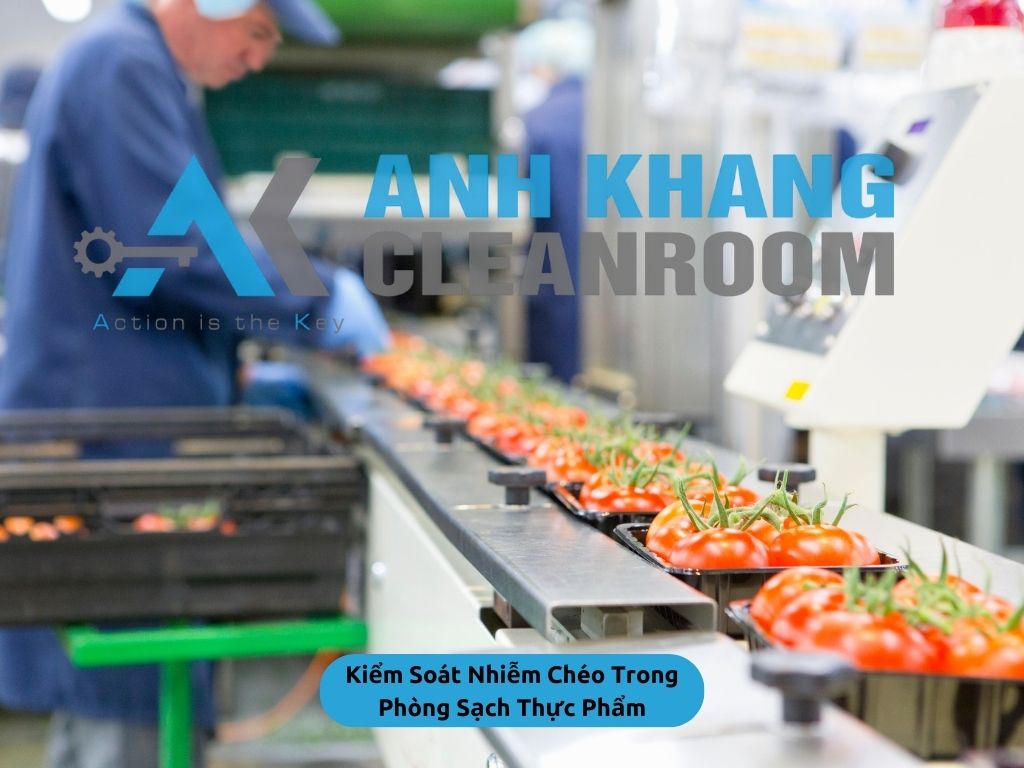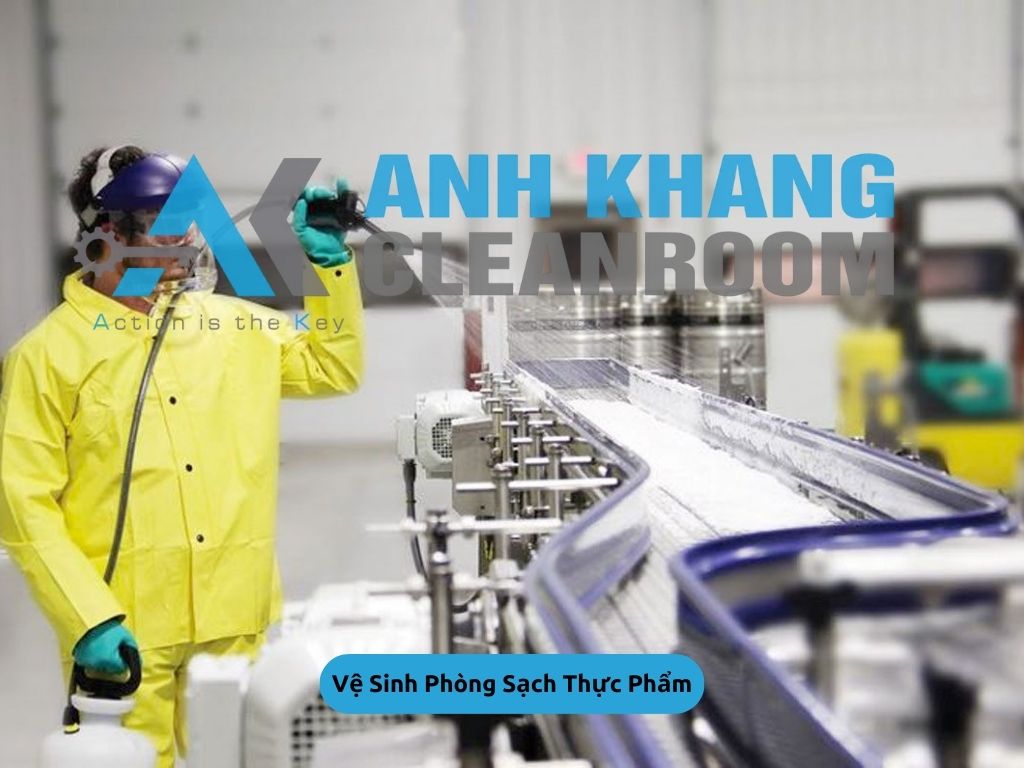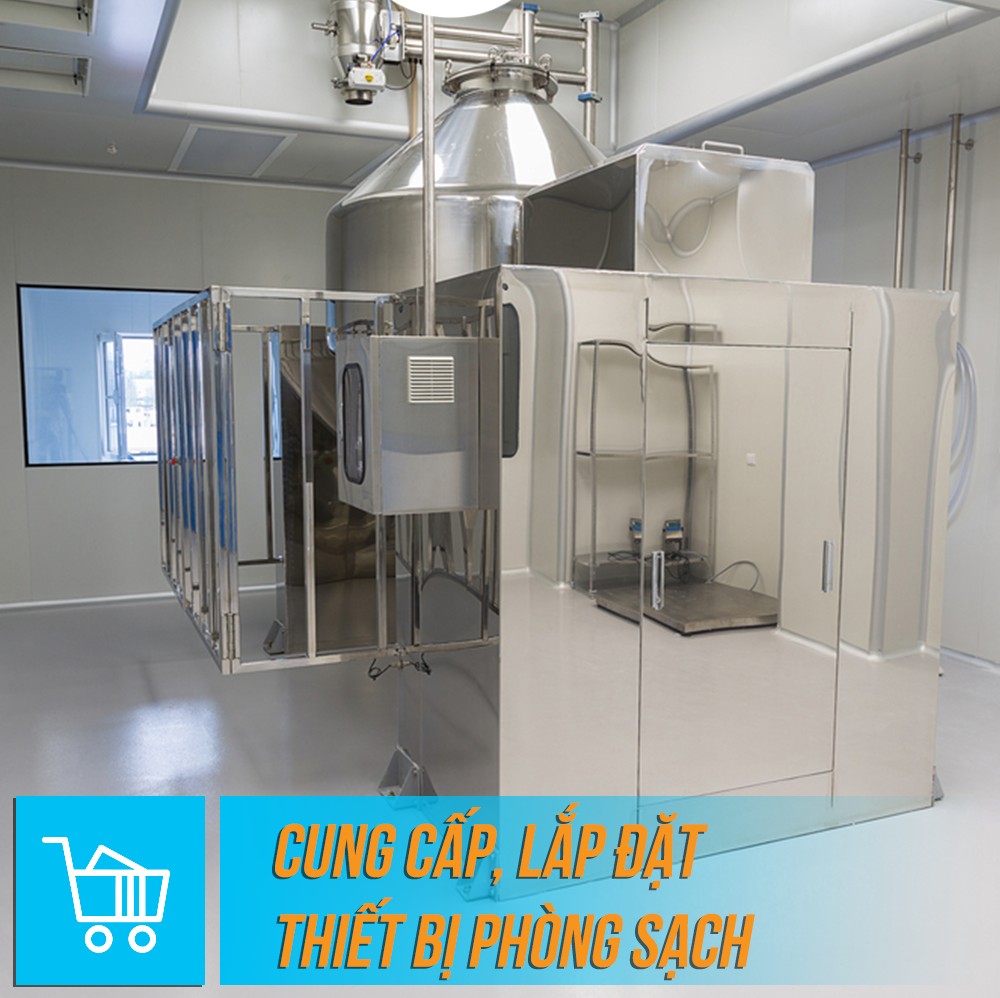5 Golden Tips to Reduce the Risk of Cross-Contamination in Food Cleanrooms
11:52 - 04/03/2025 3749
Reduce cross-contamination risks in food cleanrooms with 5 golden tips: microbial control, surface cleaning, and maintaining a stable environment. Achieve HACCP and FDA standards.
Food Cleanroom Construction: The Decisive Factor for Quality and Safety
Food Cleanroom Construction
☰ Article Table of Contents
The Importance of Controlling Cross-Contamination in Food Cleanrooms
In the food processing industry, bacterial cross-contamination is the main cause of product spoilage, risk of food poisoning , and even mass recalls . Standards such as HACCP , FDA , and ISO 22000 all require food businesses to strictly control cross-contamination throughout the production process.
At the same time, a Cleanroom Design that meets standards will be the foundation for ensuring a safe production environment.
Actual data: According to research from the FDA, 60% of food poisoning cases are directly related to cross-contamination during processing.
The act of controlling cross-contamination in food is the key factor in reducing the risk of food poisoning.

Additionally, applying Food Cleanroom Construction effectively also helps reduce risks.
5 Golden Tips to Reduce the Risk of Cross-Contamination in Food Cleanrooms
Use Properly Regulated Protective Clothing
Issue: Production staff may carry bacteria from the outside into the cleanroom if they do not wear properly regulated protective gear.
✅ Solution:
- Use specialized protective clothing for each production area .
- Categorize uniform colors for easy differentiation (e.g., Blue – processing, White – quality inspection, Yellow – packaging) .
- Mandate changing protective clothing before each shift and restrict movement between areas.
Furthermore, the Cleanroom Construction built to standard will also contribute to optimizing production efficiency.
Disinfect Surfaces & Equipment After Each Work Shift
Issue: Surfaces that come into direct contact with food (conveyor belts, cutting knives, baking molds…) are prone to bacterial contamination.
✅ Solution:
- Apply a periodic disinfection process using 70% alcohol, Cloramin B solution, or UV light .
- Schedule cleaning of machinery & surfaces after each work shift.
- Use specialized bacterial wipes instead of regular cleaning cloths to prevent the retention of microorganisms.
Periodic Microbial Testing & Pressure Control
Issue: Bacteria can easily spread between production areas if pressure differentials and airborne microorganisms are not well controlled .
✅ Solution:
- Maintain positive pressure in the processing area to push bacteria out and prevent contaminated air from entering.
- Conduct periodic checks of airborne microbial levels using bacterial counters, dust particle measurements, and mold detection .
- Install HEPA, ULPA filters to maximize removal of bacteria in the cleanroom.

Maintain a Stable Environment: Temperature, Humidity, Airflow
Issue: An unstable production environment (high humidity, fluctuating temperature) can create conditions favorable for bacterial growth.
✅ Solution:
- Maintain humidity below 50% in the food cleanroom to limit mold growth.
- Adjust the temperature appropriately for each type of food (e.g., dairy processing: 2-4°C, seafood processing: -18°C to 5°C) .
- Install a modern HVAC system to tightly control temperature & air quality.
See also: Food Cleanroom Construction – Pillar 3
Establish a Hygiene Log & Periodic Inspections
Issue: Without a monitoring & data storage system, adherence to hygiene protocols can easily be overlooked.
✅ Solution:
- Establish a daily hygiene checklist: inspect machinery, surfaces, and protective clothing.
- Conduct surprise inspections to ensure staff compliance with procedures.
- Implement a digital logging system to effectively manage cleanroom hygiene data.
Quick Checklist – Reduce the Risk of Cross-Contamination in Food Cleanrooms
Control Factors | Solutions | Inspection Frequency |
Protective Clothing | Change clothing as per protocol, no movement between areas | Every work shift |
Surface & Equipment Sanitation | Disinfect with 70% alcohol, UV light | After each work shift |
Microbial & Pressure Checks | Maintain positive pressure, periodic microbial testing | Weekly |
Environmental Control | Maintain appropriate temperature & humidity | Continuous |
Hygiene Data Storage | Digital checklist, surprise inspections | Monthly |
Optimize Food Cleanrooms – A Critical Solution for Production Safety
Controlling cross-contamination is the key to helping food businesses meet HACCP, FDA, ISO 22000 standards.
Implementing proper control measures from the start will help businesses reduce risks, improve product quality & enhance brand reputation.
Does your business need to construct & optimize food cleanrooms that meet HACCP, FDA standards?
Contact ANH KHANG CLEANROOM today!
Additionally, your business needs food industry cleanroom design that meets standards to achieve optimal efficiency.
To ensure production processes meet standards and remain safe, your business should also refer to WHO GMP .
 | ANH KHANG CLEANROOM ELECTRICAL JOINT STOCK COMPANY Hotline: 1900 636 814 - 0902 051 222 Email: info@akme.com.vn Website: akme.com.vn Address: Lot B7 - Xuan Phuong Garden - Phuong Canh - Nam Tu Liem - Hanoi. |
12:05 - 28/11/2019 47499
Cleanroom Design and Construction
14:05 - 11/03/2025 20042
GMP and ISO Standard Cleanroom Construction
14:18 - 11/03/2025 12024
ISO Standard Medical Cleanroom Construction
14:13 - 28/02/2025 22995
Electronics Cleanroom Construction
16:15 - 18/03/2021 4558
Warranty Service
16:26 - 28/11/2019 17600
Supply and installation of cleanroom equipment
14:50 - 26/11/2019 5951
Technology Production Line Consulting
16:35 - 19/03/2025 18192














